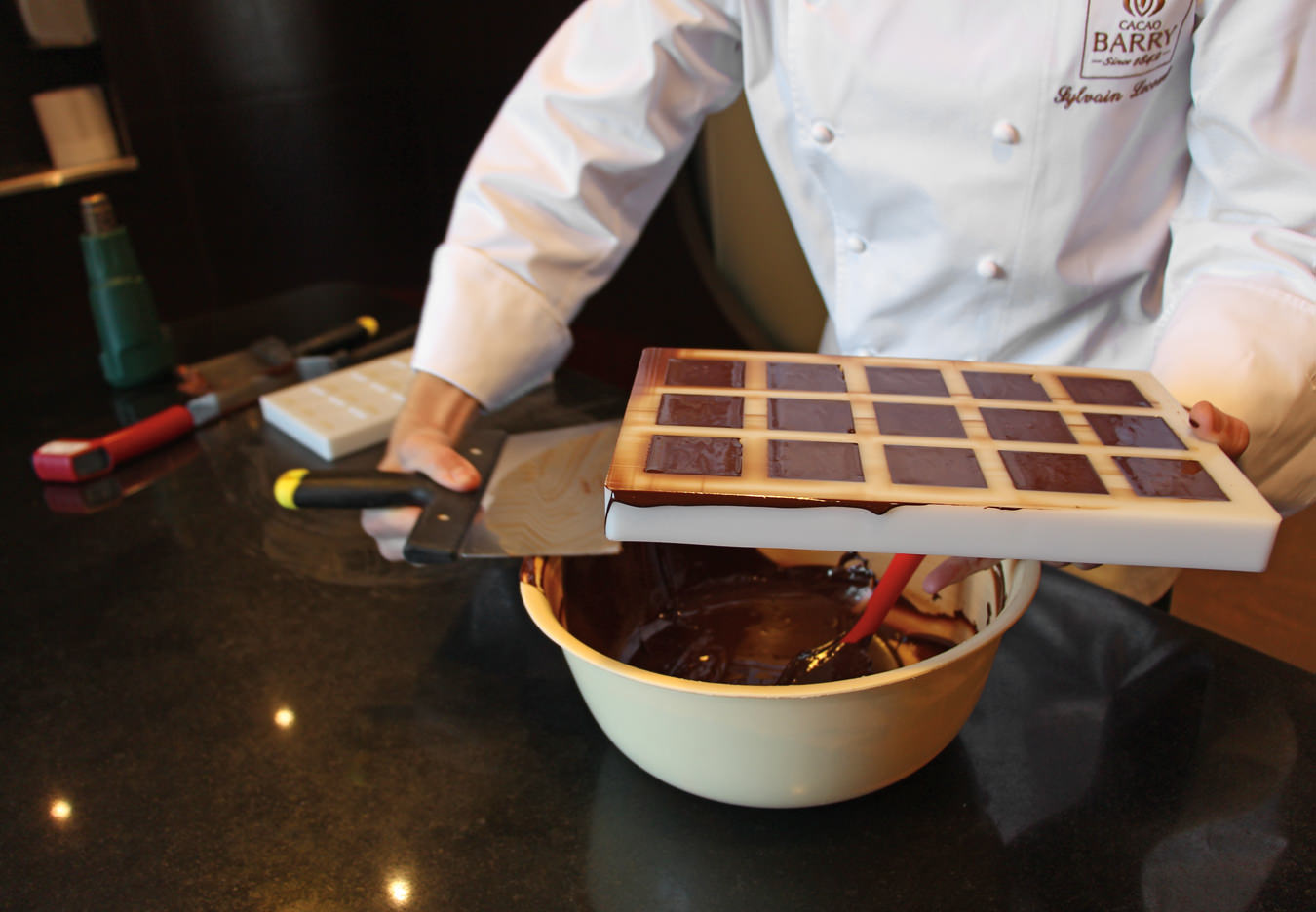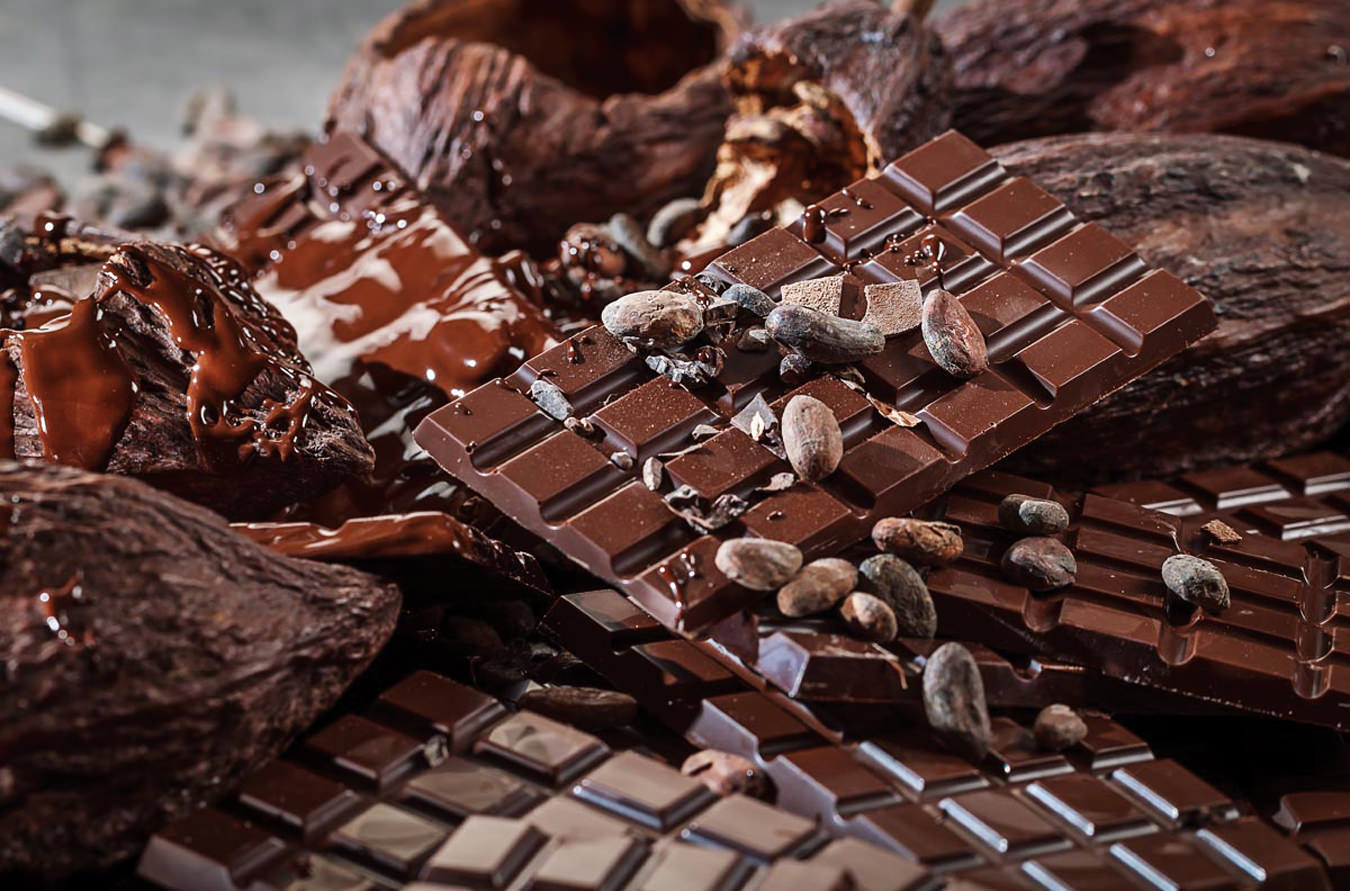Dominic Fortin can’t stop grinning. It is a beautiful July day and the 32-year-old pastry chef is about to fulfill a dream—by tonight, he will have created his own bespoke chocolate blends (dark and milk) to use in desserts, truffles, and as bars at Whistler’s Bearfoot Bistro.
He is outside Paris, in Meulan, where, in 1842, Charles Barry built a chocolate factory that would become the lifeblood of the small town, and the base for one of the world’s foremost chocolate producers. Several of the original buildings remain: what was once Barry’s house is now the Cacao Barry Chocolate Academy Center Meulan, the Cacao Barry flagship Chocolate Academy, where pastry chefs and chocolatiers learn the possibilities of the product; the Or Noir laboratory (where Fortin will spend the day) originally housed the kitchen and restaurant for the factory managers.
Only a select group of the world’s top chocolatiers and pastry chefs are invited to Or Noir: alumni include chefs from Harrods, Girona, Spain’s three-Michelin-starred El Celler de Can Roca, and Michel Roux Jr. from London’s legendary Le Gavroche. Fortin is here to create chocolates that will form part of the Bearfoot’s 20th anniversary celebrations that take place in the fall, and he has come with a very clear view of what he wants from his finished product. “I’m thinking yellow fruit and tamarind up front, then if we can, I want to bring in floral notes and tobacco at the end,” he tells Or Noir’s Amélie Allemand.
A month earlier, back in Whistler, Fortin blind tasted some 20 single origins, choosing eight with the flavour profiles he prefers. Today he must first narrow his selection down, then taste the chocolate liquor—pure chocolate, unadulterated with sugar—of those, and work on the balance of the blend. Different percentage combinations of the bean blends are then tempered and made into mini bars. These are tweaked—and more bars are made—until he settles on the one that will become his signature.
The lab is set up with a map of the world painted on glass across one semi-circular wall. The areas that grow cacao beans, and the amounts produced, are marked. Fortin’s favoured single origins, bearing only their lab names (A1, AB1, F3) sit in little boxes along the wall. Allemand starts with the F5. “I like the mango and passionfruit,” Fortin notes. “Lots of banana.” F3 fares less well. “It’s too woody, and I need more acidity.” Eventually, Fortin narrows his choice to three single origins and tastes the liquor, where the lack of sugar punches up the flavour profile, to work on the ratio.
Two blends are tempered into mini dark chocolate bars. Fortin immediately discards blend one, and asks to tweak blend two: “Let’s have a little less tobacco and add fruit, but keep the cocoa level the same.” While the new version is built and cooled, lunch is had at a nearby golf course, where a plaque on the old stone building informs that the original owner was a good friend of Napoleon. This is France: there is shellfish and steak tartare, wine and espresso.
Allemand reveals that Fortin’s chosen beans hail from Tanzania, Peru, and Cuba. He beams. Cuba is a favourite, beloved for its tobacco notes. Back in the lab, Fortin tastes A (the new blend), and B (the original blend two). “It has to be B,” he declares emphatically. And then the whole process begins again, this time to make the perfect bar of milk.
Like this story? Read more from our Dining section.










